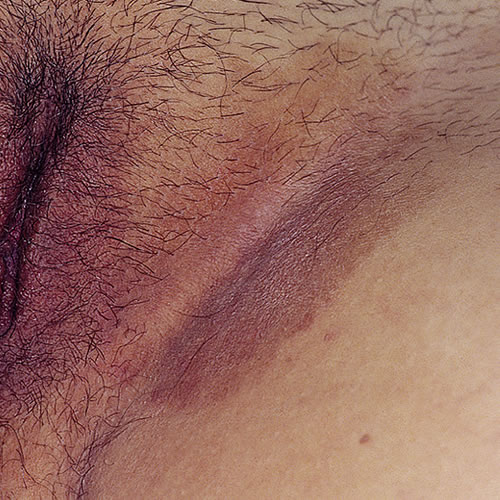Introduction
Erythrasma1 is a chronic, reddish-brown, scaling, bacterial infection of adult intertriginous areas. The vulva is usually not involved.
Epidemiology
More common in men, particularly those living in warm, humid climates.
Etiology
Caused by the bacterium Corynebacterium minutissimum, this organism prefers the warm, intertriginous areas of the groin, inner thighs, toes, and axillae and occurs in warm, humid climates.
Symptoms and clinical features
Patient history includes mild irritation.
Sharply marginated reddish-brown patches and bilaterally symmetric plaques, without peripheral scaling, extend from the edge of the labia majora through the crural folds, out onto the inner thighs.

In dark-skinned people, hyperpigmentation may be seen rather than the reddish cast of the skin.
Diagnosis
The clinical pattern is highly suggestive. Wood’s light examination shows the typical coral red fluorescence.
Pathology/Laboratory Findings
No hyphae are seen on microscopy of scrapings. These would be expected with tinea cruris, which resembles erythrasma. Wood’s light exam will be positive for coral-red fluorescence.
Differential diagnosis
Tinea cruris, seborrheic dermatitis, eczema and psoriasis.
Treatment/management
Recommend that the patient keep the area cool and dry and avoid tight synthetic clothing. The following drugs are also recommended:
- Triclosan (Tersaseptic) wash twice a day
plus - Erythromycin 500 mg orally twice daily x 1-2 weeks
- Erythromycin 2% to 4% in an alcoholic solution topically twice a day x 2 weeks; long term therapy may be necessary because of the likelihood of recurrences.